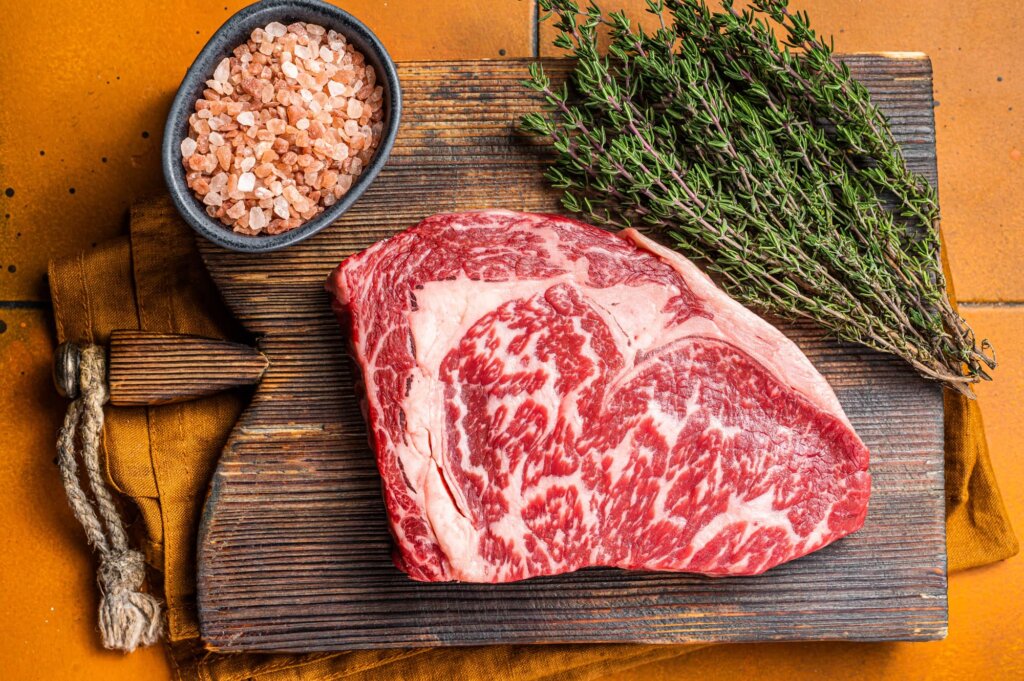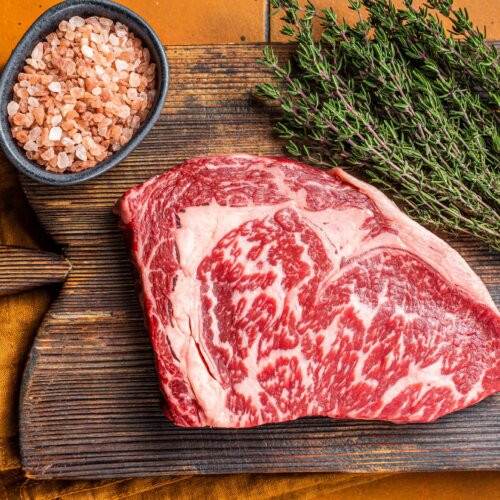
You just bought the most expensive steak in the world and now you’re wondering how to cook Japanese Wagyu beef. You aren’t alone. Steak enthusiasts don’t feel complete without trying this immaculate piece of beef at least once in their lives. But, learning how to cook Wagyu properly so that you don’t waste your money on a dried-out steak can be overwhelming when it’s left in your hands.
If you just bought some American or Australian Wagyu steaks from Chicago Steak Company and are now wondering how in the world to cook them without turning them into tough steak leftovers, you’ve come to the right place.
First: What’s the Difference?
We’re going to be talking about both Kobe and Wagyu beef, so we’ll need to let you know the difference between them before we talk about cooking Wagyu beef and Kobe beef.
To put it simply, Kobe beef is a type of Wagyu. Wagyu can also have several varieties of its own, with Japanese and American being two of the most popular options. This distinguishing factor simply refers to where the cattle the beef comes from were bred.
Japanese culture is the founding father of Wagyu beef, but other nations, like America, have adopted its special practices to raise cattle for Wagyu beef. This typically involves using work cattle that’s been fed a lean diet of grasses, straw, and other grains to create incredible marbling and flavor.
Kobe beef is rarer to find than Wagyu, and also more expensive. This is possibly the most highly-revered steak in the world, thanks to its exceptional marbling and flavor.
Chicago Steak Company sells American Wagyu steaks that truly set the bar in the steak world. These steaks come from American-raised cattle using traditional Japanese practices, weigh between 6 and 16 ounces, and are aged to perfection with our famous wet aging process.
How to Store Wagyu Steaks Prior to Cooking
Learning how to store your steaks is just as important as learning how to cook Wagyu beef. Your storing process can make the difference between a beautifully tender and rich-flavored steak and a steak that resembles a freezer-burnt hockey puck.
When you receive deliveries from Chicago Steak Company, you’ll get steaks that are fully or partially-frozen in a secure container with dry ice. Our vacuum-sealing process locks in all the natural juices and flavors of your Wagyu and Kobe beef so that your steaks maintain their freshness, as if they were just cut from the animal.
You can either refreeze your steaks by keeping them in their vacuum-sealed packages and placing them in the freezer, or thaw them in your refrigerator.
To thaw them, place your steaks on a dish in their sealed packages. Plan on allowing about six hours of thaw time per pound. Try only to allow your steaks to thaw for the minimum amount of time necessary to maintain their optimum freshness.
Temps, Times, and Tips: The Best Way to Cook Wagyu Beef and Kobe Beef
Now, let’s learn how to cook Wagyu steak!
Although Wagyu and Kobe beef cooks well on a grill, it can be a little more difficult to master the technique than cooking it on the stove in a skillet. We recommend using a cast iron skillet for Wagyu and Kobe beef cooking until you become more familiar with cooking them.
First, allow your steaks to come to room temperature outside of the fridge. This usually takes about 30 minutes or so, depending on their thickness.
Then, season your steaks. Some salt and pepper will do, or you can use your favorite steak seasoning, like our very own Chicago Steak Seasoning.
Preheat your skillet over high heat. Cut off some fat from your steaks around the edges and use it to grease your pan for the best, most natural flavor. Alternatively, you can use a little bit of butter or olive oil.
Sear your steaks for three to four minutes on each side, depending on how well you like them done. For a rarer cook, go closer to three; for a medium cook, shoot for four.
Check the internal temperature with a meat thermometer, which should read about 130-degrees for medium-rare doneness. Remove the steaks from the heat and pan and allow them to rest for 5 to 10 minutes to allow their juices to flow back through the meat.
Why You Might Want to Avoid Grilling Wagyu Steak
We mentioned briefly that cooking Wagyu beef on the grill isn’t the best option because it can be more challenging than other methods, like pan-searing. We want to dive a little deeper into this so that you understand why you might want to hold off on firing up the grill with this cut.
The primary reason is because of Wagyu’s fat content. This steak has a high amount of fat content, even more than ribeye, which is known for its fat content (a.k.a., marbling). However, fat content and the grill don’t mix well. When the fat cooks off, it drips into the grill, potentially causing dangerous flare-ups. While using a drip pan can help, it’s still not a foolproof method.
Another reason that grilled Wagyu isn’t best for people unfamiliar with cooking it is that grilling is one of the more complicated ways to cook steak. People who don’t cook steak on the grill frequently can find it challenging to get the proper internal temperature while preventing the outside from getting too browned. The last thing you want is a dried-out Wagyu!
Unless you feel 100% confident in your grilling skills, consider using the skillet method that we’ll outline in the simple recipe below.
Wagyu Beef Recipe – Nutritional Facts
Per Serving (6 oz Cooked Wagyu Steak, Based on a 2,000-Calorie Daily Diet)
| Nutrient | Amount (% DV) |
|---|---|
| Calories | 760 |
| Total Fat | 60g (77%) |
| Saturated Fat | 28g (140%) |
| Cholesterol | 165mg (55%) |
| Sodium | 220mg (10%) |
| Total Carbohydrate | 0g (0%) |
| Sugars | 0g |
| Protein | 48g (96%) |
| Iron | 5.1mg (28%) |
| Potassium | 620mg (13%) |

Wagyu Beef Recipe
Ingredients
- 2 8oz wagyu steaks
- salt
- 1 tbsp oil
- black pepper (optional)
Instructions
- Remove Wagyu steaks from the refrigerator. Salt generously on all sides and let sit at room temperature for 45 minutes.
- Preheat a cast-iron skillet with oil over medium-high heat.
- Place steaks in the skillet, cooking for 2-3 minutes until the bottom side becomes golden brown.
- Flip each steak to the other side, cooking for another 2-3 minutes.
- Check the internal temperature with a digital meat thermometer. If cooking to medium-rare, the thermometer should read 130 degrees. If done, remove the steak and set them on a cutting board. If your steaks need more time, reduce the heat to low and continue cooking another minute or two until the thermometer reads the desired temperature.
- Rest steaks under tented foil for 5-10 minutes before enjoying.
Conclusion: Buying and Cooking Wagyu Beef and Kobe Beef
Now you know how to cook Kobe beef and Wagyu! It’s not much different than other steaks, but since you’re working with such expensive cuts, the process can seem more intimidating. We suggest checking out our selection of American Wagyu ribeye and other cuts. We guarantee uncompromising quality, even giving each steak its own registration number so that you can buy with confidence. Since our steaks are wet-aged to perfection and sealed to lock in freshness, you’ll be ready to learn with some of the best Wagyu steaks your money can buy.

